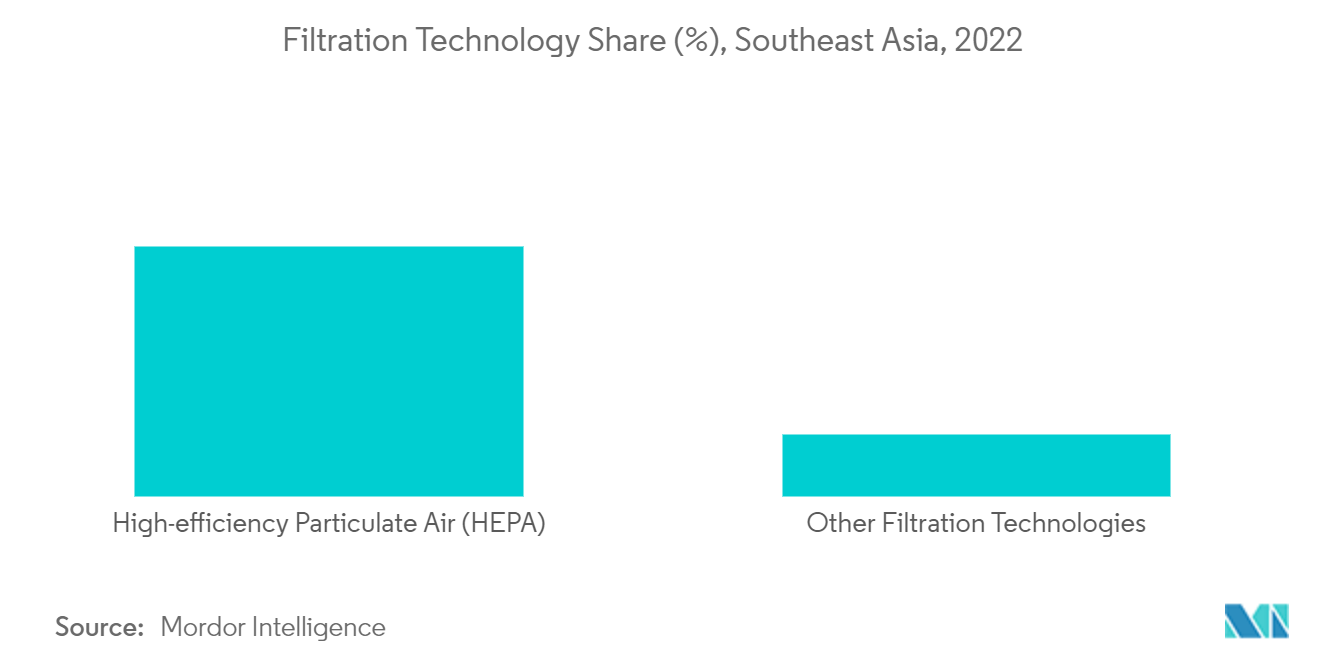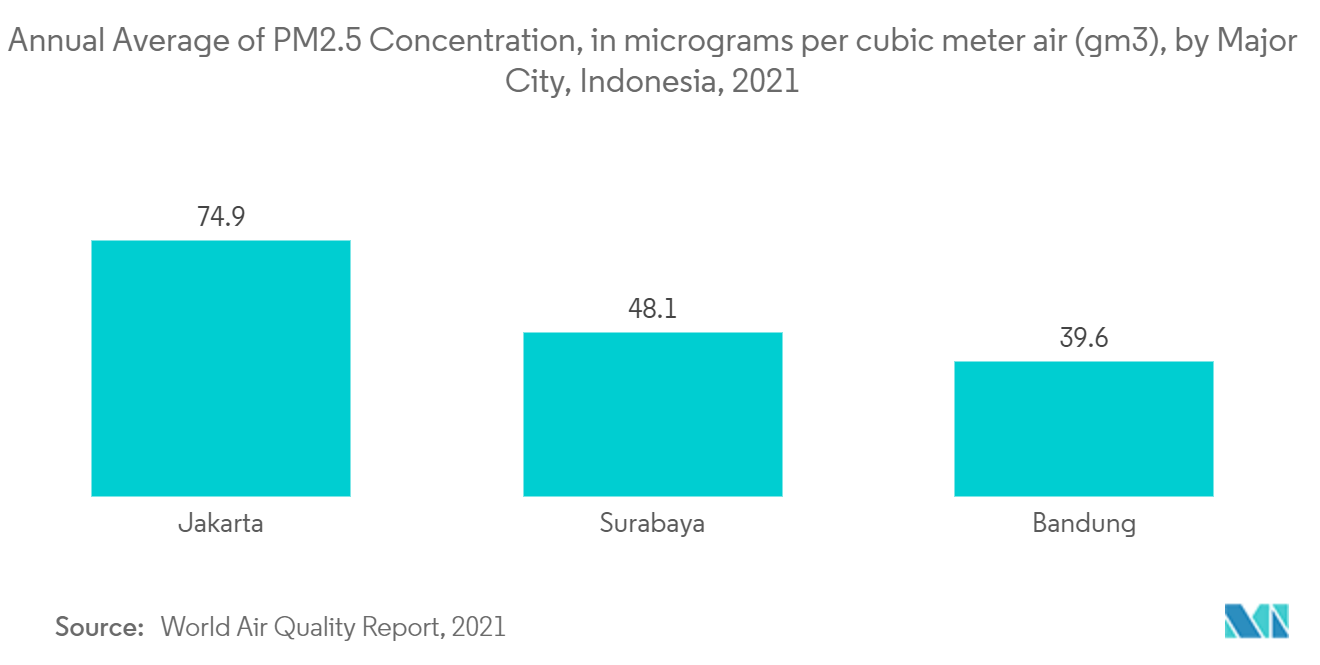Market Trends of Southeast Asia Air Purifier Industry
High-Efficiency Particulate Air (HEPA) Expected to Dominate the Market
- Mechanical air filters, such as HEPA filters, remove particles by capturing them on filter materials. It captures large airborne particles, such as dust, pollen, mold spores, animal dander, and particles containing dust mite and cockroach allergens.
- HEPA filters are a type of extended-surface filter with a larger surface area and higher efficiencies for removing larger and smaller airborne particles. Moreover, these types of air filters remove respirable particles more efficiently than pleated filters.
- The two most common standards required for HEPA air purifiers include the capability to remove particles, i.e., 99.95% (European Standard) or 99.97% (ASME Standard), which have a size greater than or equal to 0.3 micrometers.
- Furthermore, HEPA filter applications in industrial and commercial spaces have led to high demand for the product across Southeast Asian countries. The advent of newer HEPA filters with advanced integrated technologies, designs, and new concepts is likely to increase demand for the product. The rising air pollution and worsening climatic conditions fuel the need for the work, which may boost the HEPA filter market in the coming years.
- For the last 10 years, HEPA filters have been proven across a wide range of healthcare facilities and life science applications to control the spread of airborne particles and organisms, such as viruses and bacteria. Moreover, many professional engineering organizations recommend HEPA filters in hospitals, infection control clinics, and other healthcare facilities to eliminate microbes and other dangerous particles.
- Therefore, based on the above-mentioned factors, high-efficiency particulate air (HEPA) technology is expected to dominate the market during the forecast period.

Indonesia Expected to Dominate the Market
- As of 2021, Indonesia stood in the seventeenth position in terms of the most polluted country globally, with an average of 34.3 µg/m³ PM2.5 concentration weighted by population. According to the World Air Quality Report, in 2021, Indonesia was the most polluted country in Southeast Asia.
- Moreover, as of 2021, Surabaya, Bandung, and Jakarta were the three most polluted cities in the country, with the highest annual average of PM2.5 concentrations coming from Jakarta (39.2 µg/m³ PM2.5 concentration).
- Seasonal agricultural burning practices, seasonal forest fires, rapid urban development, open burning of household waste, and reliance on coal-based energy are the primary sources of particulate pollution in Indonesia.
- Although the COVID-19 pandemic led to an improvement in global air quality, cities such as Jakarta, Indonesia, consistently recorded high PM2.5 levels, which were exacerbated by coal-fired plants working in the vicinity of the city. Moreover, Indonesia is set to build more coal-fired power plants in Jakarta, which may lead to more air pollution and increase the adoption of air purifiers.
- Therefore, based on the above-mentioned factors, Indonesia is expected to dominate the air purifier market in the Southeast Asian region during the forecast period.

